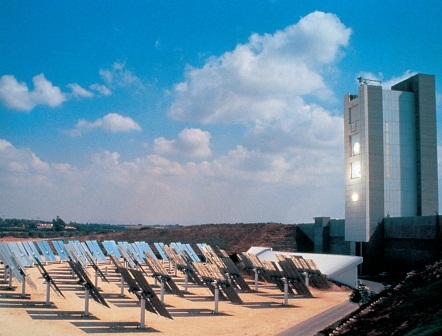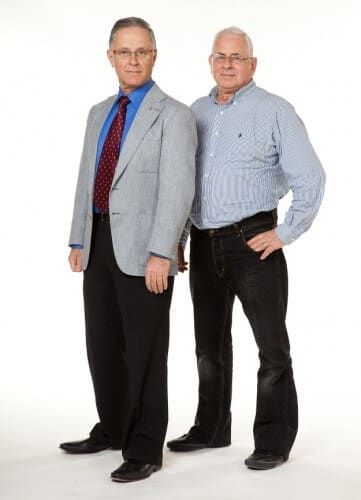Solar technology developed at the Weizmann Institute will be used to convert CO2 into fuel and the Blashner Center at Ben Gurion University won a prestigious grant to convert carbon dioxide into jet fuel * Both universities are members of the Center of Excellence for Renewable Fuels

An Israeli-Australian venture will use solar technology developed at the Weizmann Institute of Science to reduce carbon dioxide emissions from burning brown coal. The project was recently established in Israel by the company NewCO2Fuels Ltd. , which belongs to the Australian company Greenearth Energy Ltd, which acquired exclusive rights to use technology from the company "Yida" which promotes industrial applications based on the inventions of Weizmann Institute of Science scientists.
It is an innovative method for breaking down carbon dioxide (2CO) into carbon monoxide (CO) and oxygen (2O) using concentrated sunlight. The same method, which was developed at the institute by Prof. Yaakov Karni, also makes it possible to break down water (O2H) into hydrogen (2H) and oxygen (2O), and at the same time to break down carbon dioxide.
The carbon monoxide (CO) or its mixture with hydrogen, called syngas, can be used as a fuel, for example to generate electricity, or undergo a process of conversion to a liquid fuel such as methanol, which can be stored, transported or consumed as fuel for cars.
The method was successfully tested under laboratory conditions. Now the company NewCO2Fuels Ltd. is building. An industrial-scale reactor for the decomposition of carbon dioxide. The company carries out part of the development process in collaboration with the Canadian Center for Solar Energy Research at the Weizmann Institute of Science.
Greenearth Energy expects that the Israeli-Australian venture will make it possible to efficiently utilize the huge reserves of brown coal in the state of Victoria in southeastern Australia. Now the use of this type of coal is limited, because its burning is accompanied by the emission of a large amount of carbon dioxide. The possibility of converting the carbon dioxide into fuel, in an efficient and clean process, will turn the huge deposits of brown carbon into a reservoir of environmentally friendly fuel.
The Bleshner Center at Ben Gurion University won a prestigious grant to turn carbon dioxide into jet fuel

Prof. Moti Hershkowitz, who heads the Ben-Gurion University of the Negev's energy initiative, and Prof. Miron Landau from the Belshner Center for Industrial Catalysis at the university, won a prestigious grant from the Israel Alternative Energy Development Fund (I-SAEF) in the amount of approximately $200,000 for three years
Prof. Moti Hershkowitz, the Vice President and Dean of Research and Development at Ben-Gurion University of the Negev, together with Prof. Miron Landau from the Department of Chemical Engineering and the Belashner Center, received a prestigious grant from the Philanthropic Fund (I-SAEF), for a groundbreaking development for the production of renewable liquid fuels in the amount of $200.000 for three years.
Prof. Hershkowitz: "Our research is designed to determine the feasibility of iron-based catalytic systems in the hydrogenation (a chemical process in which hydrogen is used) of carbon dioxide into jet fuel. The improvement of the catalysts (catalysts) together with optimal handling of the type of reactor and the process conditions will lead to improved performance, which means selective production of jet fuel. Success in this research, which is part of a broader plan, will allow commercial application in the long term (10 to 20 years)."
Prof. Hershkowitz leads the energy initiative at Ben-Gurion University of the Negev, which deals, among other things, with promoting research into the production of renewable fuels from various sources, such as: carbon dioxide, water and solar energy or biomass. Also, as the director of the Blashner Center for Industrial Catalysis and Process Development, he focuses on renewable fuels research. He holds the Israel Cohen Chair in Chemical Engineering.
It should be noted that Ben-Gurion University of the Negev with the Technion and the Weizmann Institute are partners in the center of excellence in the field of renewable liquid fuels.

5 תגובות
When you burn CO you get CO2. So what's the profit? Brown coal is removed and CO is extracted from it, which means ancient carbon returns to the atmosphere. am I wrong?
It turns out according to the results of the analysis of the atmosphere on Mars that 96 percent of the atmosphere is carbon dioxide.
If it can be decomposed into 2O with the help of solar radiation, then there is a future for life there.
I have a request for those who have the data of the strength of the Earth's magnetic field:
How many wraps does a spacecraft body have to wrap, what length and at what speed does the spacecraft need to cross the Earth's field lines to generate enough electricity with a power of 1 kilowatt?
I would love to receive a scholarly calculation from one of the geniuses of the Weizmann Institute.
Thanks
Reuven
And on every car?
No need to pump anything. Can be installed in chimneys of fossil power plants.
All that remains is to efficiently pump CO2 from the air and get stuck with a cooling effect that our grandchildren will have to deal with due to increased industrialization